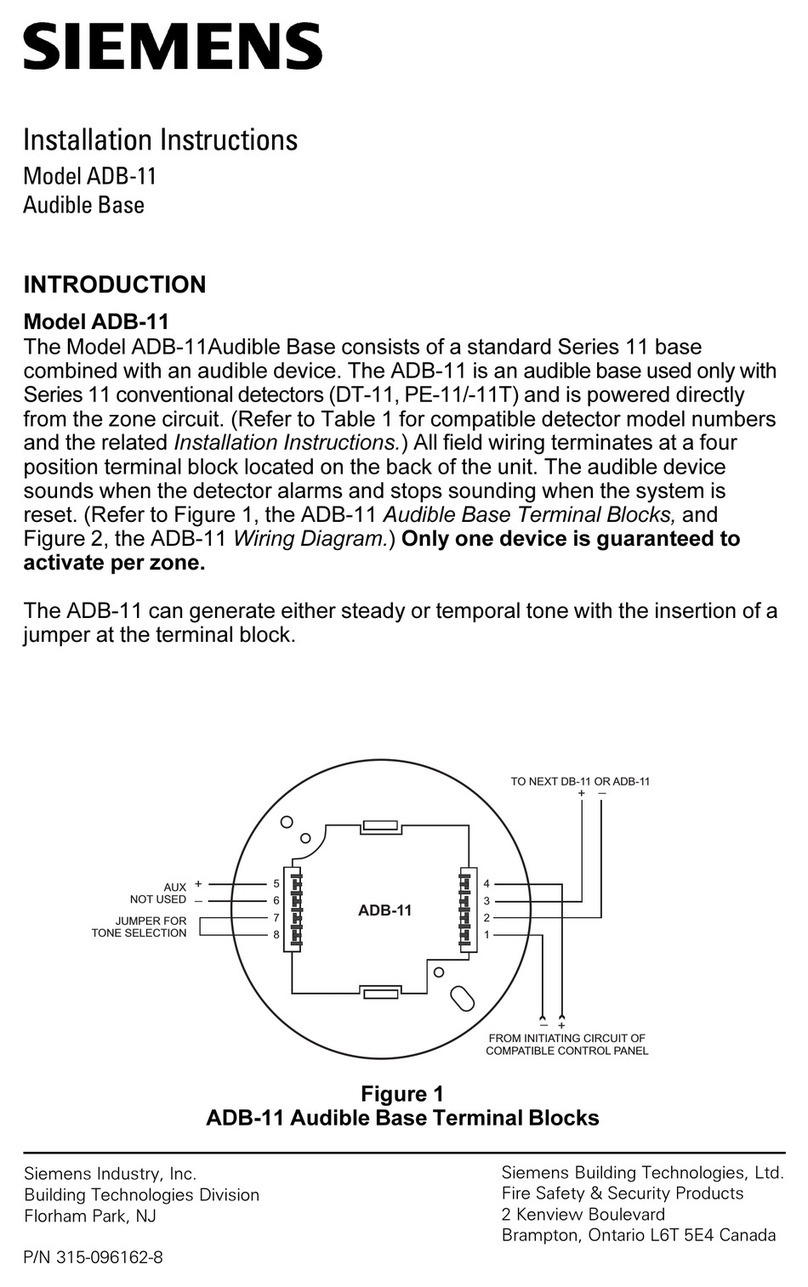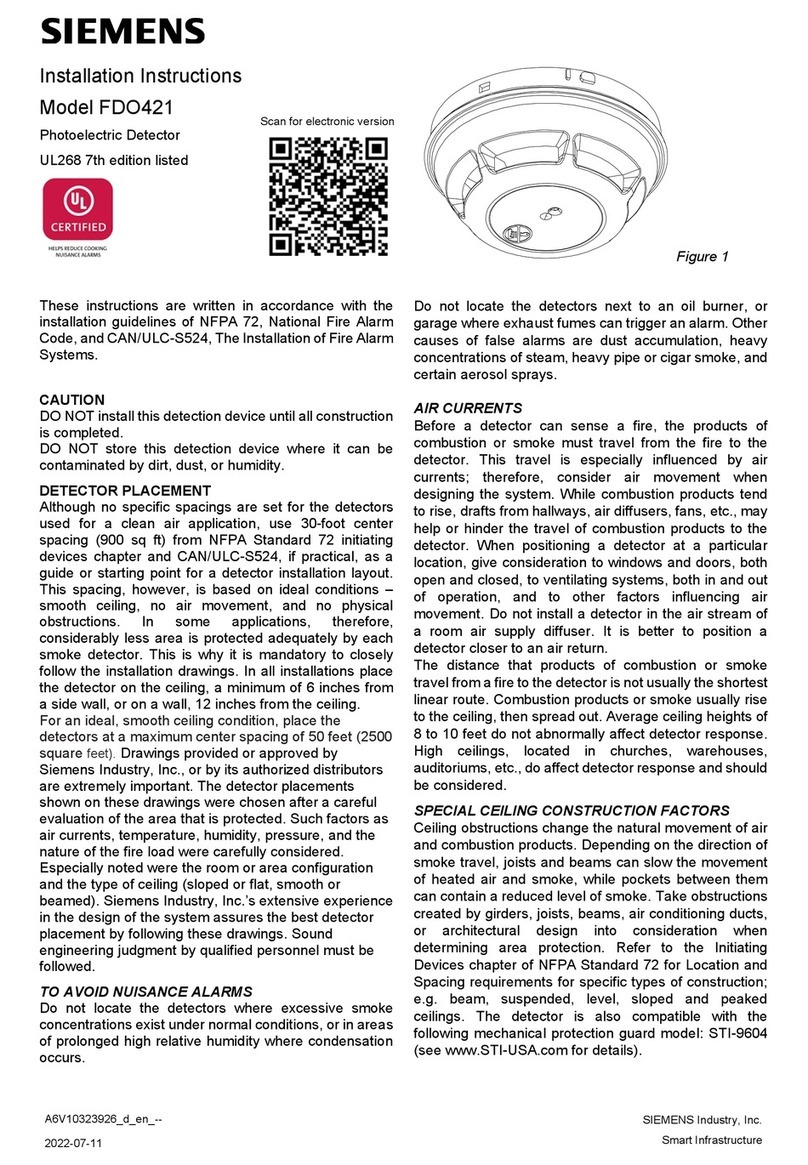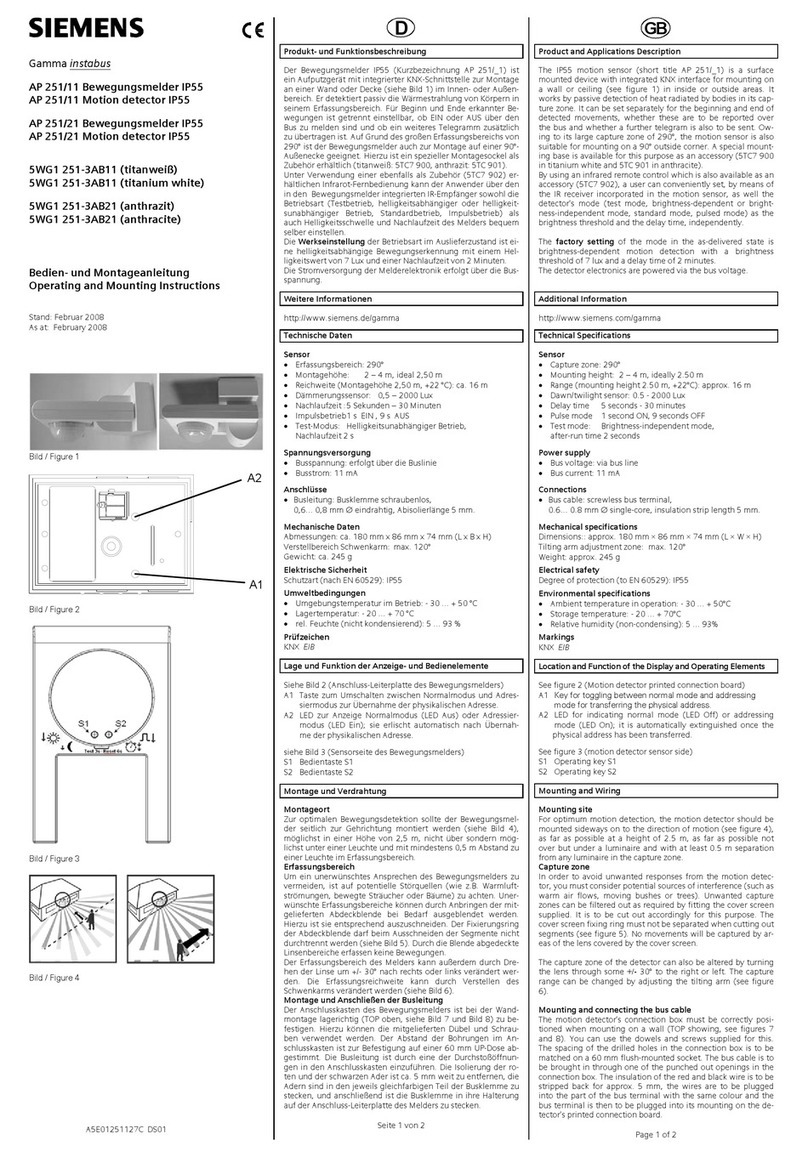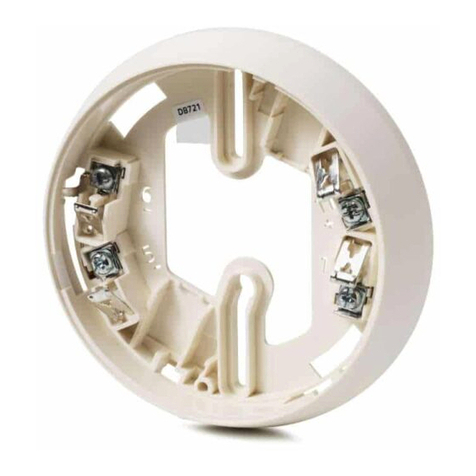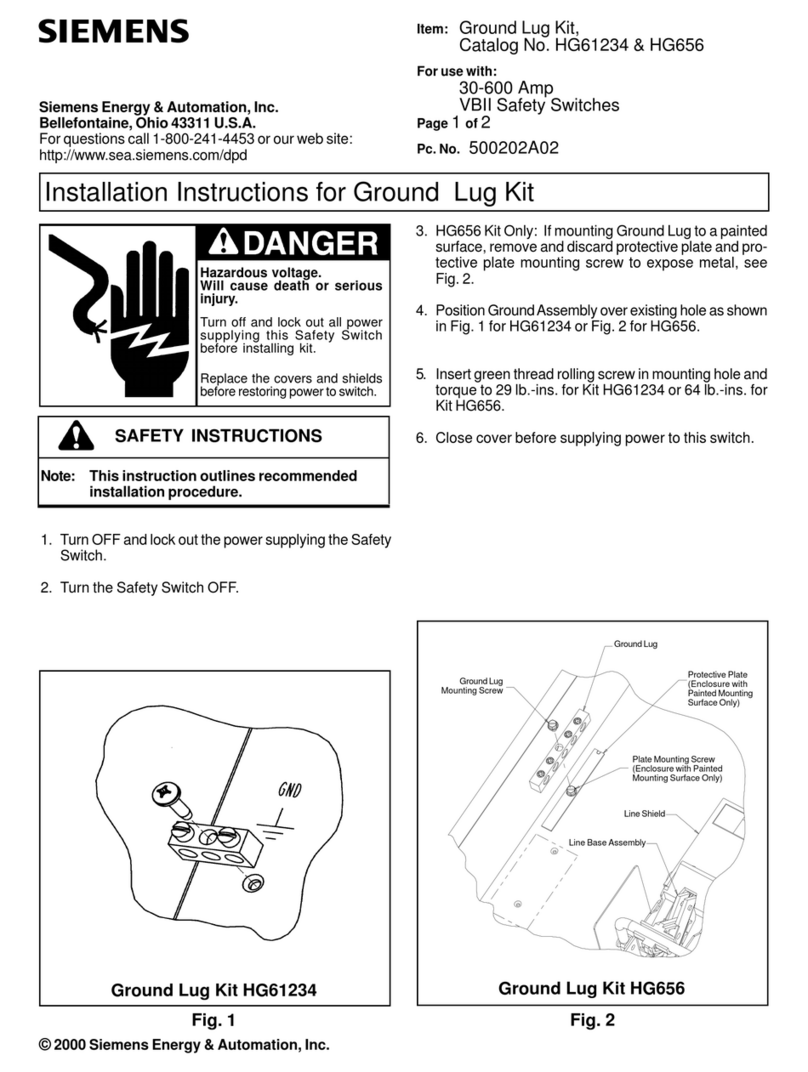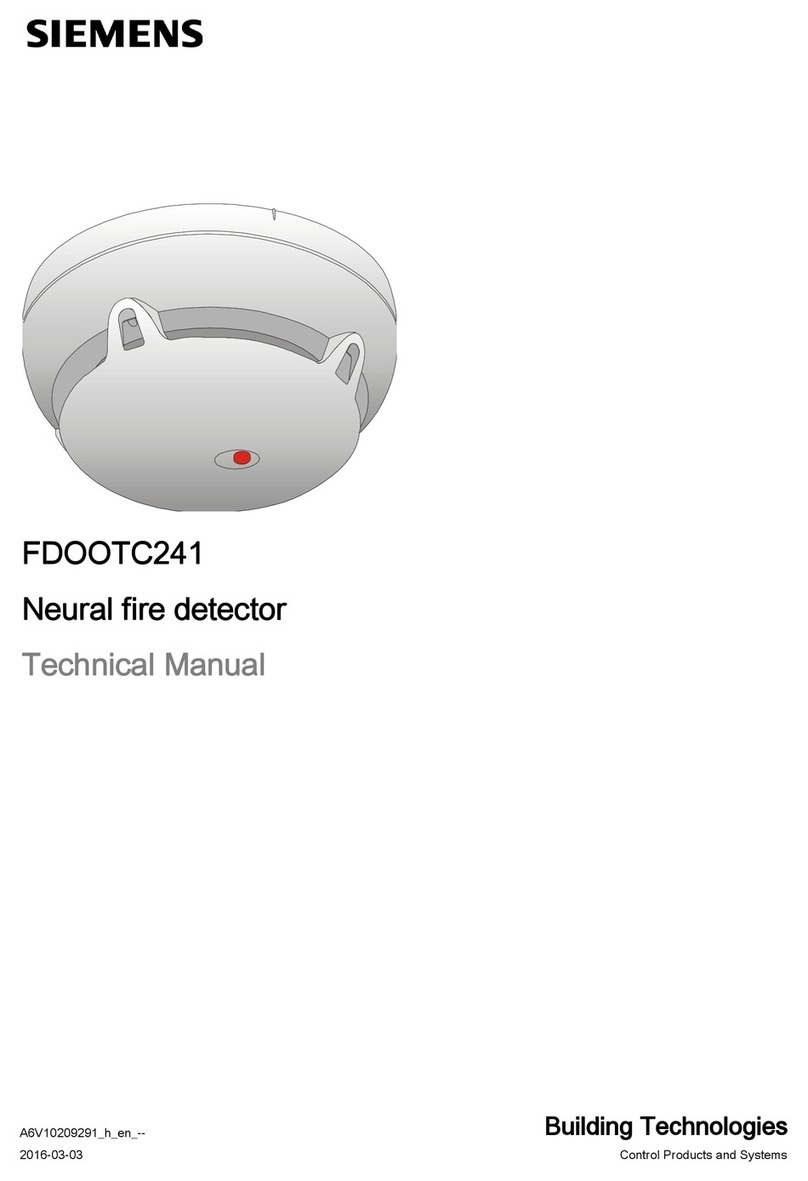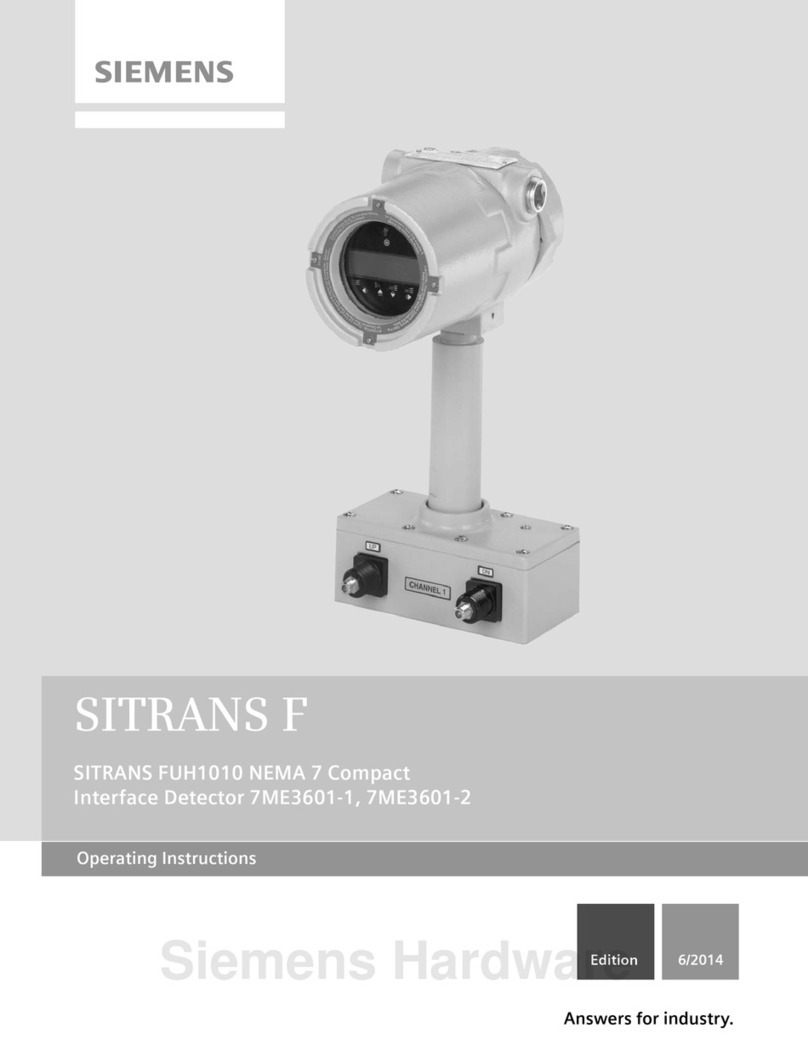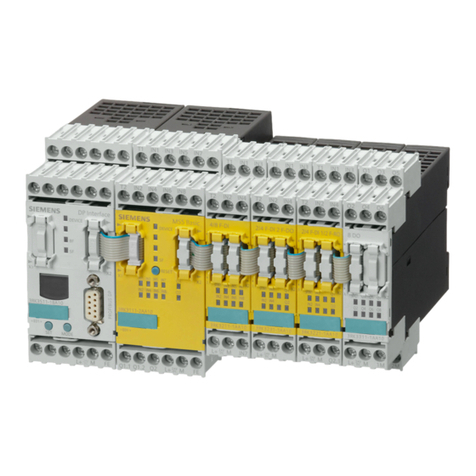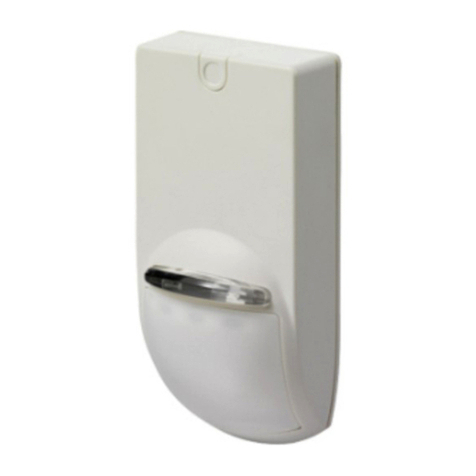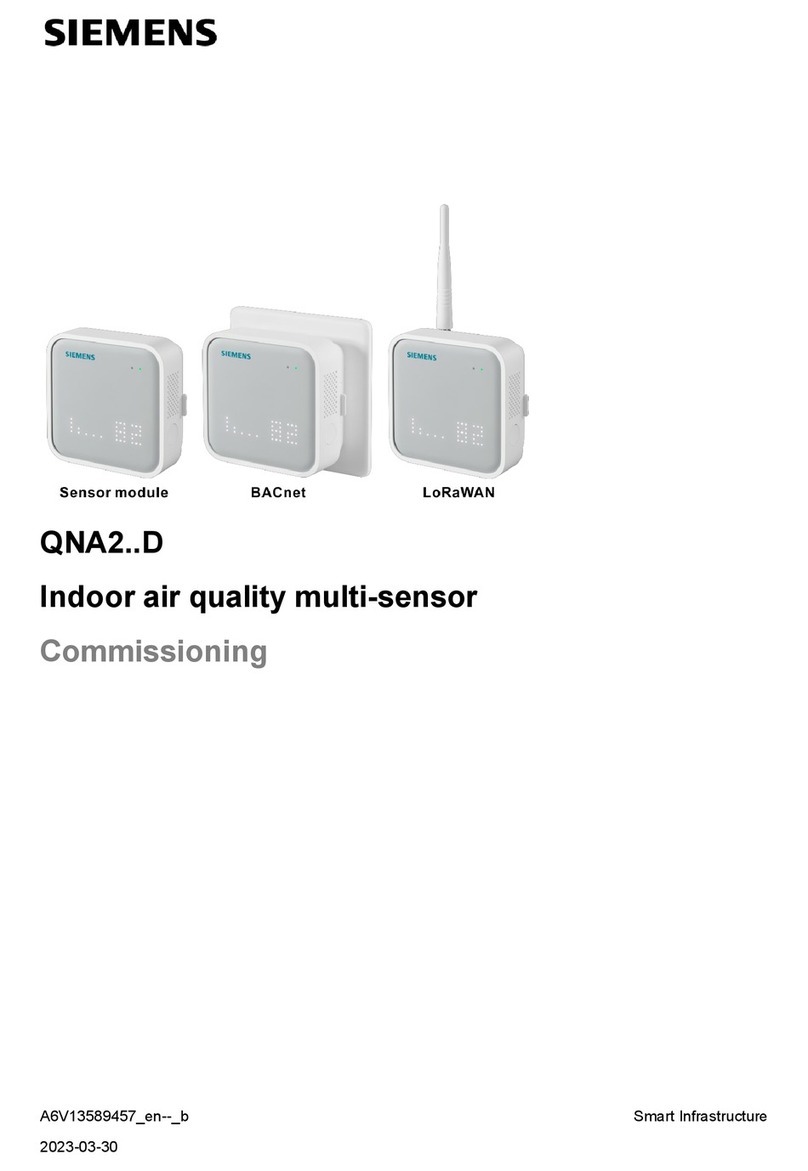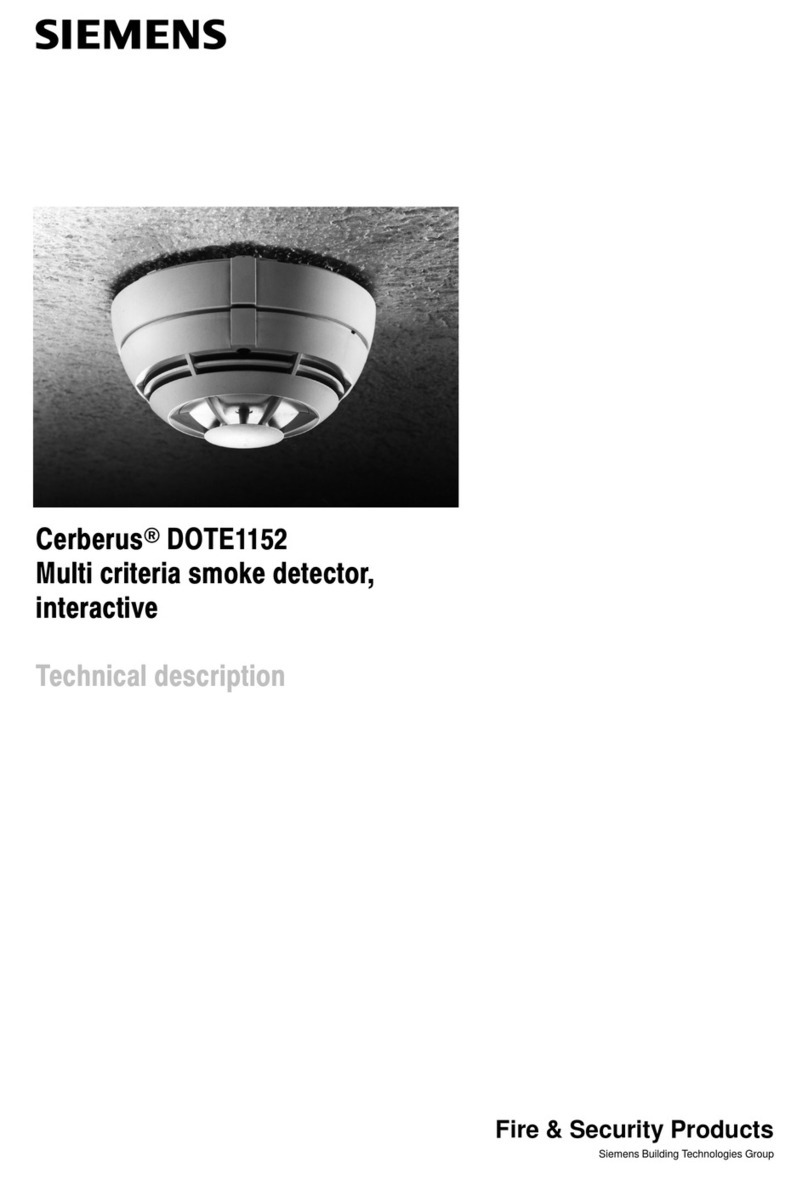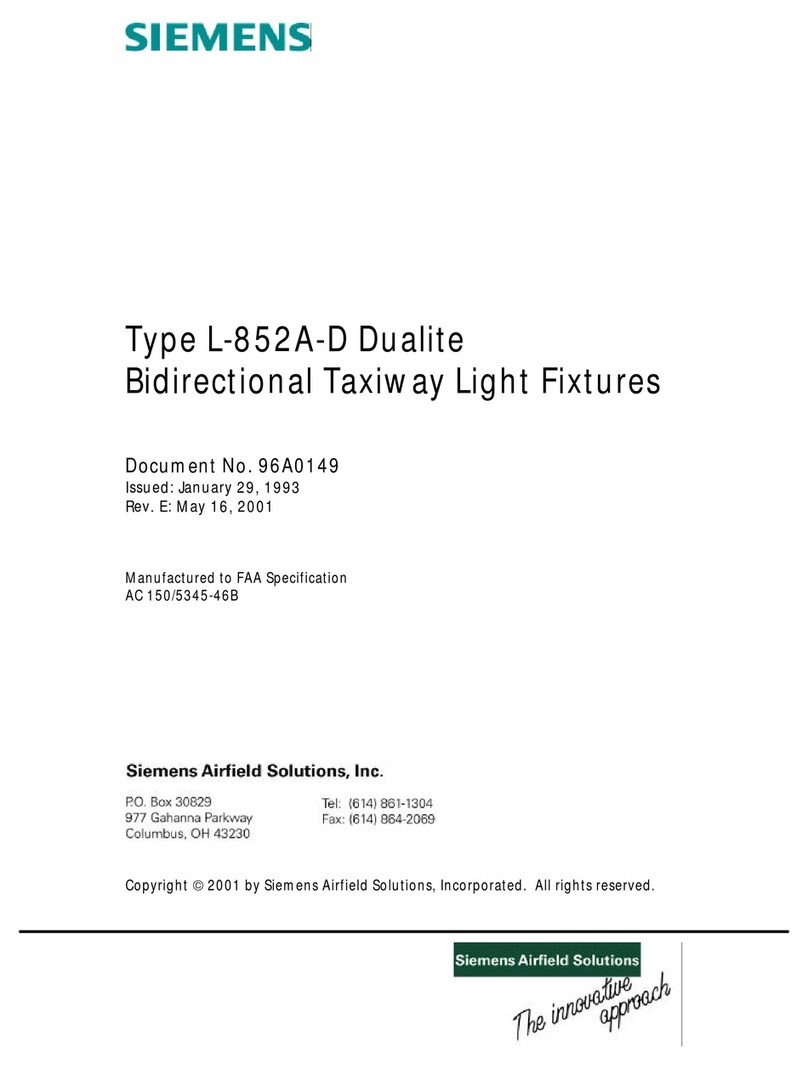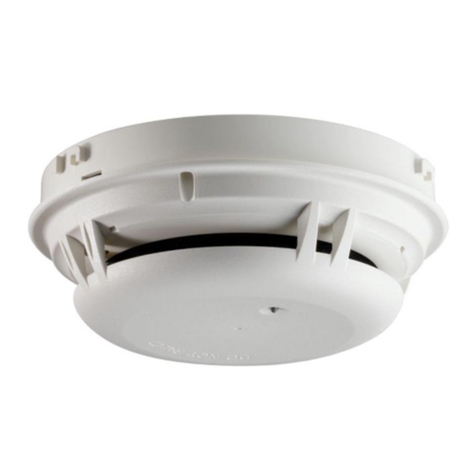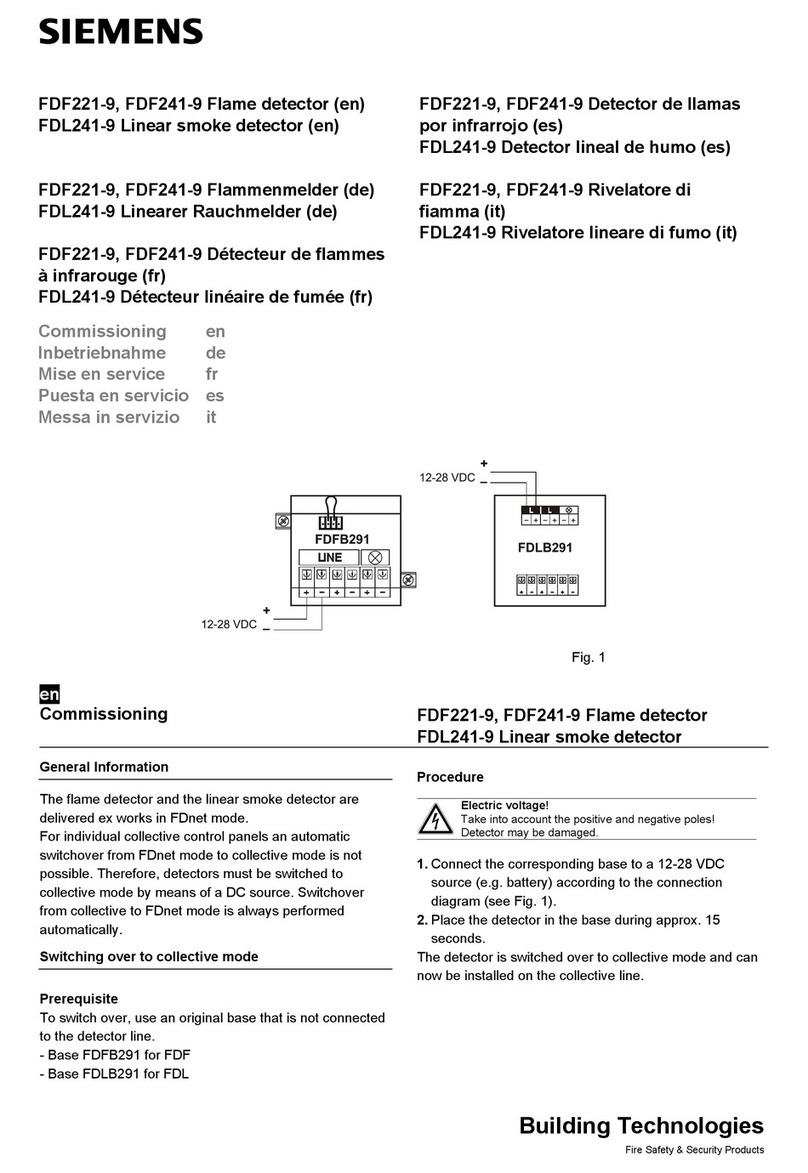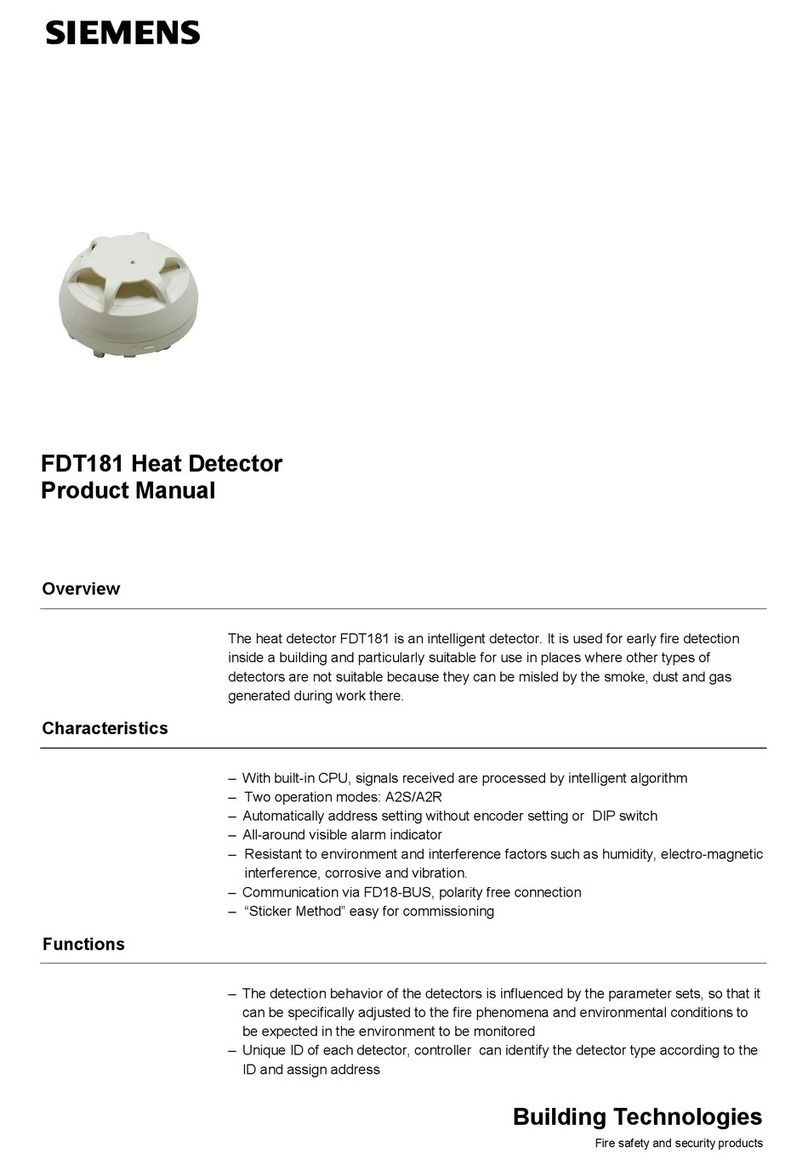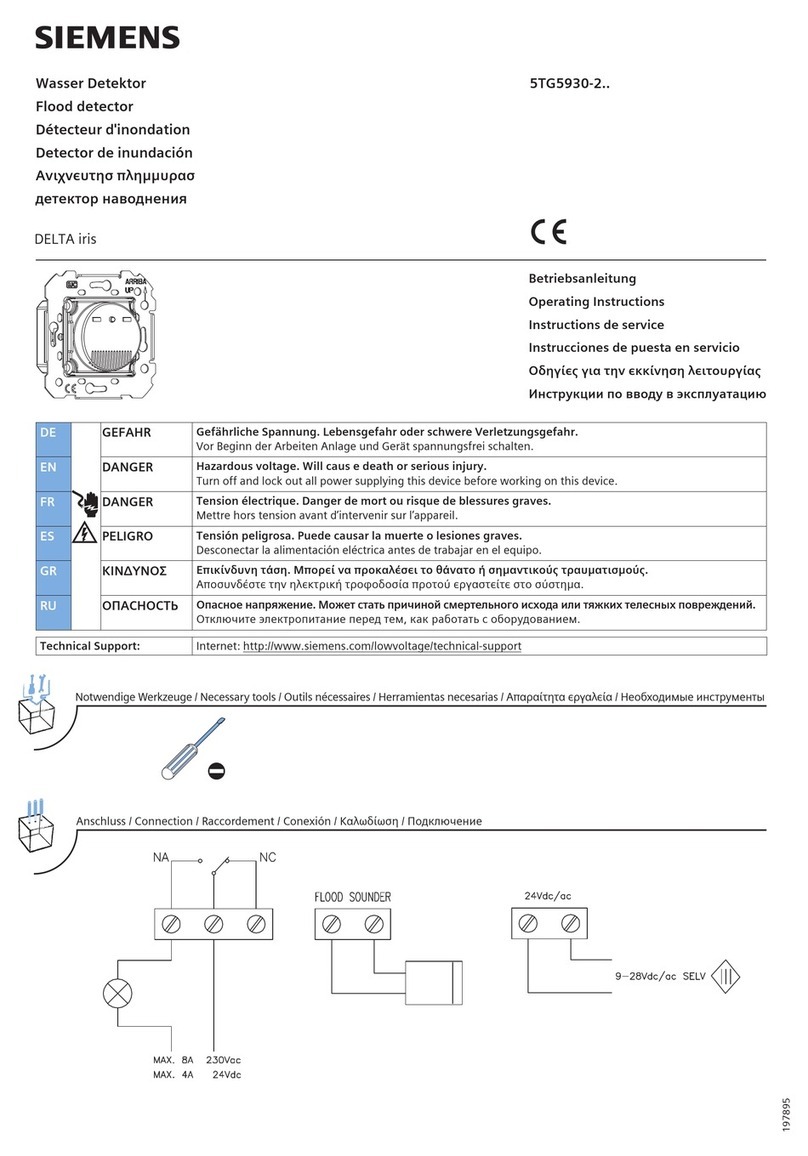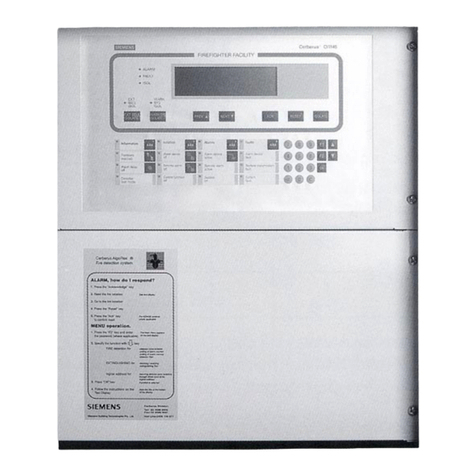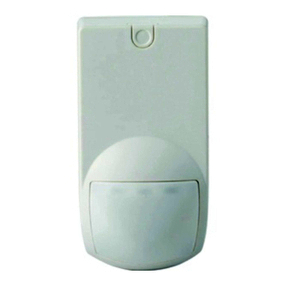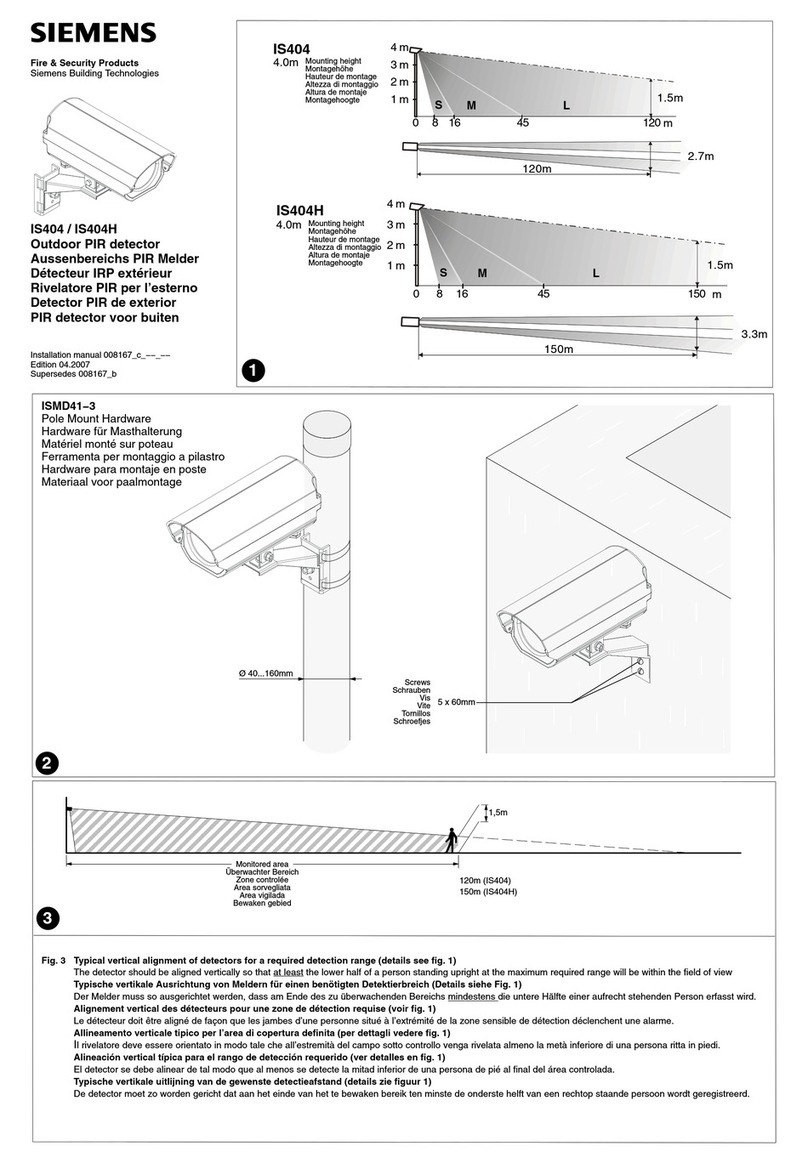
GAMMA instabus
Technical product information
February 2012
UP 258D11 OPTISENS OFFICE Pre ence detector / motion detector with lighting control 5WG1 2582DB11
Siemens AG UP 258D11, 8 pages Technical manual
In rastructure & Cities Sector, Building Technologies
Control Products and Systems © Siemens AG 2012 Update: http://www.siemens.com/gamma
P.O. Box 10 09 53, D93009 Regensburg Subject to change without urther notice
2.13.1.6/1
Product and functional de cription
The UP 258D11 is a presence/motion detector with inte
grated 2point light control. The UP 258D11 device com
municates via KNX/EIB with actuators or other KNX de
vices. It is designed or mounting on the ceiling. Owing
to its tilting sensor head, the UP 258D11 can be aligned
with the required capture area. The main application or
the device is automatic lighting control in an o ice
workplace.
The UP 258D11 senses the presence o a person or that
there is no longer anyone in its detection area. The de
tector signal can be analyzed via two separate communi
cation channels, termed motion detector and presence
detector.
Additionally, the UP 258D11 provides an output or con
trol o HVAC applications. For example, this unction can
switch systems that are used or heating, ventilating and
airconditioning control (HVAC) o the room rom “En
ergy saving mode” in an unused room to “Com ort mode”
in an occupied room and back to “Energy saving mode”
when the room is again unoccupied.
For each detector unction block (presence, motion,
HVAC) 4 communication objects are available, in total 12
di erent communication objects. Depending on con igu
ration, one or two KNX telegrams are sent onto the bus
when motion is irst detected and when, a ter the last
motion was detected, an overshoot time has expired.
The values o the communication objects are con igured
or each unctional block (motion detector, presence
detector, HVACdetector) via corresponding parameters.
Each time a presence is detected, the overshoot time is
started. Its duration is separately con igurable or each
unctional block. The end o presence is determined by
the end o the overshoot time.
The duration o the dead time is also con igurable per
unctional block. It is used to protect the actuators that
are connected to the detector. I a presence is detected
during the dead time, neither telegrams are sent nor the
overshoot time is started.
In the ollowing the telegrams, which are sent at the
beginning o a presence, are called A and B, the tele
grams, which are sent at the end o a presence, are
called C and D.
Operating Sequence
A ter the device has detected a presence, telegram A is
sent immediately. I it has been con igured to send also a
telegram B, then telegram B is sent a ter the con igured
time (optionally also cyclically).
I there are no motions any more, at the end o the over
shoot time telegram C and (i con igured) telegram D are
sent. Telegram D can also be sent cyclically.
I there are motions while the overshoot time is running,
the overshoot time is restarted.
Flowchart:
motion
A B C D
bus telegrams
dead time
overshoot time
U e a ingle device or a main detector (ma ter),
re pectively econdary detector ( lave)
The detector can be operated as an independent device,
as the main or secondary detector.
According to the requirement, additional presence detec
tors can be connected with the “main detector” via
KNX/EIB as “secondary detectors” to extend the presence
detection zone. “Secondary detectors” supply motion
in ormation only to the main detector.
Brightne mea uring – adju table via KNX/EIB
The UP 258D11 contains an independent light sensor.
The signal measured there is available both at the
KNX/EIB and internally.
Because the light sensor measures directly, it must be
possible to calibrate it or indirect measurement, so that
it can be adapted to the di erent installation sites. Rapid
